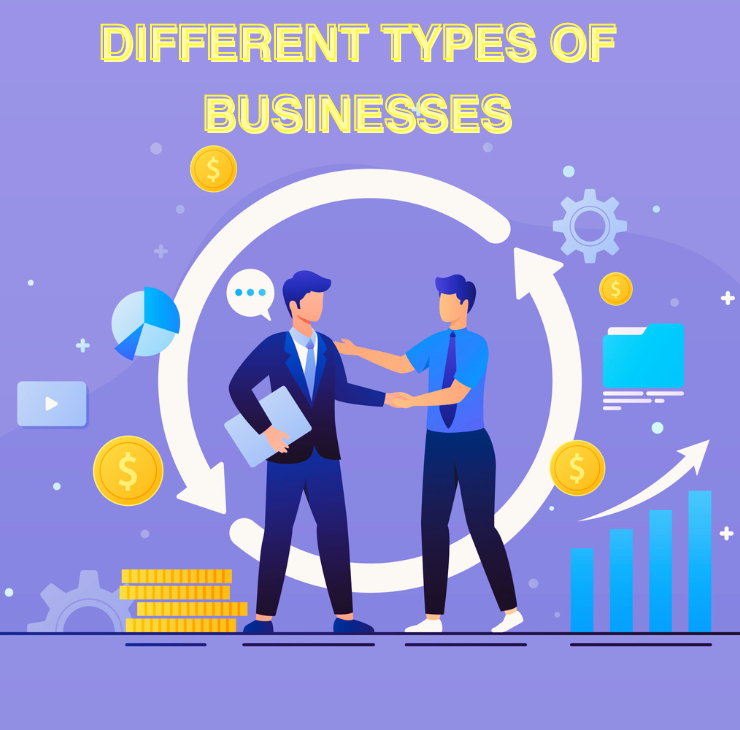One of the most important ways that businesses vary from one another is size. Whatever your position, it might be advantageous from a professional standpoint to understand the various business sizes and the category to which your prospective employer belongs. Understanding the most typical business sizes and their key attributes is a crucial piece of knowledge. In this post, we go over the different business size classifications and outline the key traits of each.
What’s it business size?
The magnitude of a firm’s operations is referred to as its company size. A variety of measures, such as assets, revenue, production, market capitalization, workforce size, and invested capital, are used to measure it. One of the most important ways that businesses vary is in size. Regardless of your line of work, being aware of the various business sizes and types can be beneficial to your career. It is crucial to understand the most typical company sizes and their key attributes.
The company’s competitiveness is impacted by its size, hence it matters. Big businesses, for instance, have a lot of resources to enhance competitiveness. They also gain from larger economies of scale that are not available to small enterprises. Consequently, they benefit from lower expenses and higher yields.
“Also Read: What is a business? Definition, Sizes & Types”
Sorting the Business Sizes
Institutions and nations may have different classification systems. Every organization has distinct classifications and definitions. Some might classify based on the quantity of personnel. While others might make use of revenue or turnover. Based on the businesses size, these three typical business types are:
First type of business sizes: Little company
The smallest possible business sizes is called a small business. But they’re not always a bunch of underprivileged workers doing their jobs in a basement. A small business typically employs no more than 1500 people and generates no more than $38.5 million in revenue annually.
Features of tiny enterprises
Among the primary traits of small enterprises are:
- Insufficient IT personnel: The majority of small enterprises simply have one employee who manages all IT-related duties; at most, a limited number of people hold IT-related responsibilities. Since complicated procedures are rarely needed, the IT workforce typically consists of a small number of people who learn on the job.
- Just one person makes decisions: Most critical business decisions in small organizations are made by the chief executive officer. Generally speaking, small business owners don’t assign choices since they have a clear idea of how their organization should be operated.
- Restricted geographically: Typically, small firms just have one location. However, some people may operate remotely from other locations due to outsourcing and remote labor.
- A constrained geographic region: Due to the logistical challenges of growing, small enterprises typically have to restrict their operations to a relatively narrow geographic area. Businesses that wish to grow into new markets typically need to bring on new hires, which forces them into a new size category.
- Employed a limited group of experts: Due mostly to financial constraints, the majority of small enterprises do not employ functional specialists to execute particular activities. The proprietor is typically the most highly competent individual in the organization, and specialist work like accounting and legal matters are typically outsourced.
Second type: medium-sized company
While they are not nearly as huge as a large corporation, mid-market organizations are more expansive than small businesses. Their yearly income ranges from $38.5 million to $1 billion, and they typically employ between 1500 and 2000 people.
Features of mid-market businesses
Among the primary attributes of a mid-market company are:
- Specialized positions: Specialized jobs become necessary as a firm grows from a small business to a mid-market enterprise because of the increase in the quantity and complexity of activities and choices.
- Assign duties to other people: Mid-market firm owners require managerial abilities to assign tasks to others, in contrast to small business owners who typically make all of the major decisions.
- Individually owned: Like small firms, the majority of mid-market companies are privately held and run by the individuals who founded them.
- Disparate sites and personnel that work remotely: A firm frequently has to grow and open additional sites as it grows. Hiring remote workers is also increasingly likely.
Third type of business sizes: Big business
There aren’t many large businesses. But because of their size and dominance in the market, they make up the majority of all American firms’ revenue, bringing in over $1 billion annually from a workforce of over 200 workers.
Features of big businesses
Among the primary traits of huge businesses are:
- Global: Large businesses usually have their headquarters in one nation, but they also frequently conduct business throughout numerous other nations. The management of the firm can be done remotely from its headquarters or through branches spread throughout different regions, depending on the specifics of the enterprise.
- Departments with specialized knowledge: Different departments within large corporations include human resources, finance, marketing, sales, and research & development. They hire experts in their domains and are autonomously overseen by department managers.
- Set up like companies: In contrast to small and mid-sized businesses, which are typically directly held by an individual or group of individuals, large companies are typically structured as corporations in order to decouple their tax liability from their proprietors.
- The directors’ board: Typically, corporate owners do not run their businesses. Rather, they elect a board of directors and give them complete authority over all corporate decisions.
- A diverse group of customers: Large organizations typically appeal to a wide spectrum of consumers and are always looking for new markets to offer their goods and services to. This is in contrast to smaller businesses, which might make money by concentrating on a single product or service, a limited geographic area, or a certain customer type.
“You also can read about: Types of Businesses”
How Is the Business Sizes Determined?
Business sizes is determined by a number of metrics, such as:
1. The quantity of workers: the number of workers the company has is one metrics to determined business sizes. Because of the scale of their activities, large corporations employ more people than small ones.
2. Income: Earnings from the selling of products or services is referred to as revenue. Using a sales volume measure is an additional method.
3. One metrics to determined business sizes is Manufacturing: Production is the amount that the business produces. Since service providers cannot be quantified in the same manner as manufacturers, this metric has no bearing on them.
4. The total amount of money used: how much cash the business has. It often has a favorable correlation with the resources that are accessible. Capital, for instance, might be thought of as the total of debt and equity. As an alternative, we might speak of tangible assets like real estate, vegetation, and machinery.
5. The Value of the Market: What is the total market value of the company’s shares? It is limited to publicly traded corporations with shares that are listed on a stock exchange.
6. Capitalization of the market: number of outstanding shares multiplied by the firm share price.
A Few Elements That Affect to business Sizes
1. Estimates of sales
Reliable sales forecasts demonstrate the size of the market, which determines the firm’s size. By doing this, the company can avoid making investments in facilities that are too big and expensive to turn a profit. The size of the market, or the amount of the demand, determines the company’s size.
2. Prospects for Growth
The likelihood of near-term demand growth affects the company’s size as well. A large-scale operation and future company expansion requirements can be satisfied by an enterprise.
3. Technical aspects:
The following are a few technological elements that determine the Business Sizes:
- The production machine’s nature: A huge corporation will have a large production machine, as in the case of the steel, shipbuilding, or aviation industries. Similar to this, businesses are typically smaller when they use modest, basic production machinery, such those used to make ballpoint pens, bake bread, or make silverware.
- Production diversification: more uniform goods; maybe a bigger company footprint. Businesses that manufacture trendy, standardized goods are typically smaller ones. a modest scale to satisfy regional customers’ demands.
- Input availability: A corporation’s size is determined by the availability of the inputs needed for production; if labor, raw materials, energy, etc. are hard to come by, the company cannot grow very large. A company’s size is determined by the accessibility of its essential resources.
- The Income Approach’s Applicability: The Economist claims that a company’s size is also influenced by how well the Income Approach works. The size of the company is influenced by whether the relevant industry abides by the law of increasing or declining returns.
- Costs of transportation: In situations where the transportation expenses of the final product are substantial, the business can function on a smaller scale to cater to the demands of nearby customers.
The business sizes is a relative concept that is strongly influenced by the industry in which it operates. However, there are three primary business volumes, and apart from their industry, they all have certain common features. In this article, we talked about the three main categories of business sizes, and the different characteristics of each species. In addition, mention are made of the measures that determine the business sizes.





